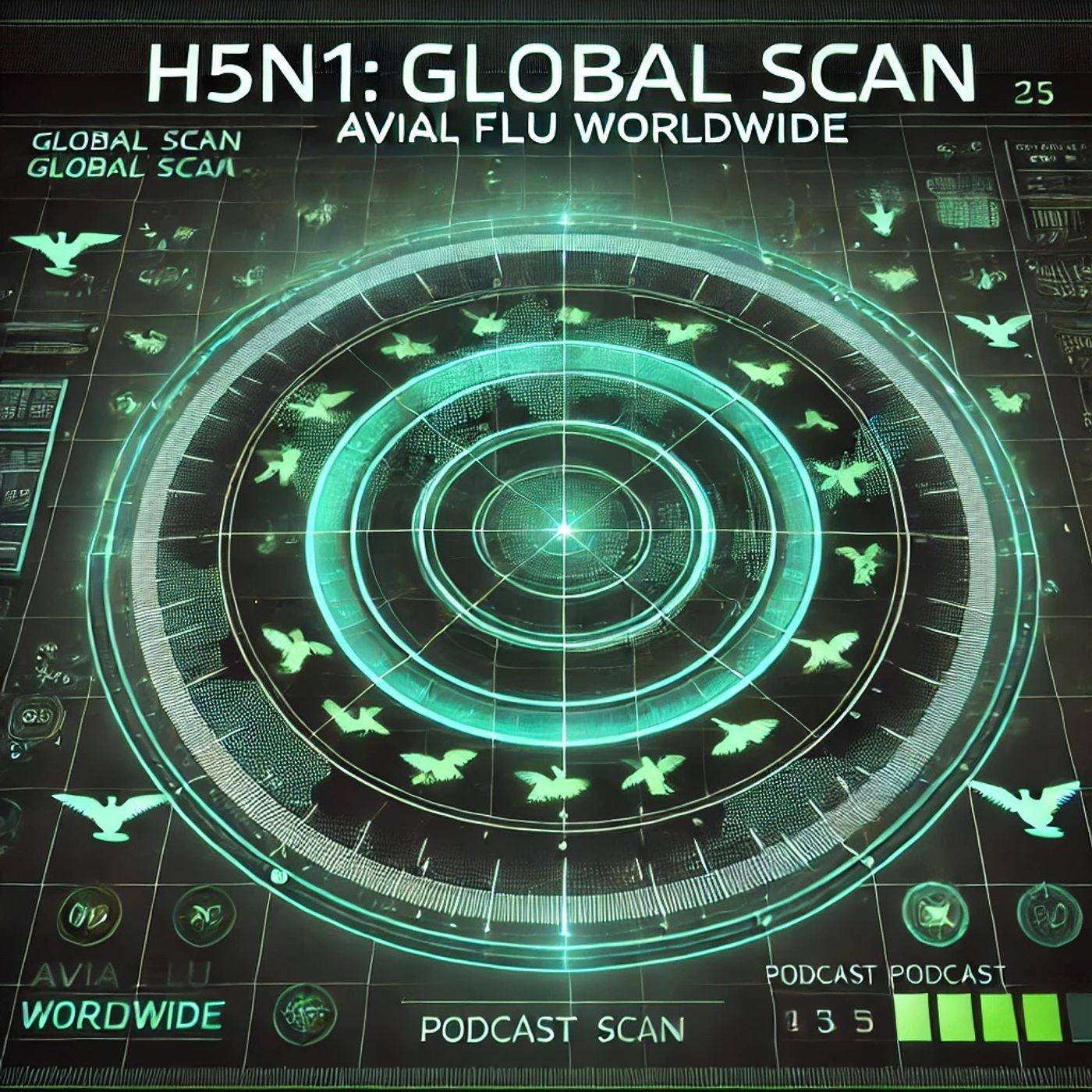Podcast Episode Details
Back to Podcast Episodes
H5N1 Avian Flu Spreads Globally: Worldwide Outbreaks, Economic Impact, and Pandemic Preparedness Efforts Intensify
This is H5N1 Global Scan: Avian Flu Worldwide, your international focus podcast on the global impact of avian influenza. I’m your host, and today we take a closer look at H5N1’s worldwide footprint as of September 2025.
H5N1 continues to span continents, impacting health, agriculture, and economies. According to the World Health Organization, since 2020, outbreaks have been recorded on every continent except Australia, with major hotspots in Southeast Asia, Africa, Europe, and the Americas. In Africa, migratory wild birds have driven recent outbreaks across northern and western regions. In Asia, Cambodia, Vietnam, and China face recurring human and animal cases, with Cambodia reporting clusters of human deaths in early 2025. In Europe, outbreaks peaked in poultry populations, while the Americas are contending with widespread infections in wild birds and mammals, and notable events in the US and Mexico, including rare human cases. Even New Zealand and Pacific islands ramped up surveillance after wild bird outbreaks approached their borders.
Major research initiatives are being undertaken globally. Scientists are sequencing the virus clade 2.3.4.4b, which has widened its host range to include foxes, cats, sea lions, cattle, and farmed animals. Reports from Johns Hopkins note this evolutionary leap raises concerns about interspecies transmission and emphasizes the threat to both animal and human health. Genomic surveillance, led by coalitions involving the US CDC, European CDC, and Asian institutions, tracks viral evolution and informs future vaccine design.
WHO and the UN Food and Agriculture Organization stress the urgency of coordination. In their September 2025 update, both agencies pointed to the growing risk of pandemic potential and called for robust vaccination campaigns, culling policies, and swift cross-border information sharing. According to the FAO, over 18,000 H5N1 outbreaks in poultry have been reported since 2020, resulting in tens of millions of culled birds and heavy economic losses. Both international bodies are leading simulations for pandemic preparedness and expanding high-visibility warning systems across borders.
Trade is feeling the effects. Export bans on poultry products have been implemented by nations like the Philippines, Japan, and France, interrupting global supply chains and contributing to inflation and shortages. According to the UK’s DEFRA, millions of chickens and other livestock have been culled in Europe and the United States, exacerbating food insecurity and economic instability.
Vaccine development is advancing but faces major challenges. While several new-generation avian influenza vaccines are in late-stage clinical trials in China, the EU, and the United States, the rapidly shifting virus lineages hamper universal vaccine efficacy. Some countries deploy emergency poultry vaccines, but human vaccine stockpiles remain strategic and limited in most nations, often kept for frontline workers and at-risk populations.
Approaches to containment range from strict culling and bird market closures in China and Southeast Asia, to ramped-up mammalian surveillance and farm biosecurity in North America and Europe. Lower-income regions grapple with gaps in detection and veterinary public health infrastructure, often relying on international aid and mobile response teams.
H5N1’s global journey is a stark reminder of the need for strong science, open communication, and coordinated international action. Thanks for tuning in to H5N1 Global Scan: Avian Flu Worldwide. Come back next week for more global insights. This has been a Quiet Please production. For more, check out Quiet Please Dot A I.
For more http://www.quietplease.ai
Get the best deals https://amzn.to/3ODvOta
This content was create
Published on 2 weeks, 2 days ago